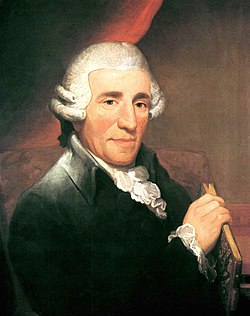
The Symphony No. 61 in D major, Hoboken I/61, is a symphony by Joseph Haydn. The autograph has survived and is dated 1776. [1]

The Symphony No. 61 in D major, Hoboken I/61, is a symphony by Joseph Haydn. The autograph has survived and is dated 1776. [1]
The symphony is scored for flute, two oboes, two bassoons, two French horns, timpani and strings. There are four movements:
The opening movement is colorfully orchestrated. Particularly notable is the second theme which starts with pulsating oboes and bassoon before the flute enters with a falling motif. The expositional coda also features a pulsating accompaniment against a chromatic rise in the strings. [1]
Daniel Heartz has noted the "hunt"-like character of the final movement, and Haydn's greater mastery of rondo form compared to earlier symphonies. [2]